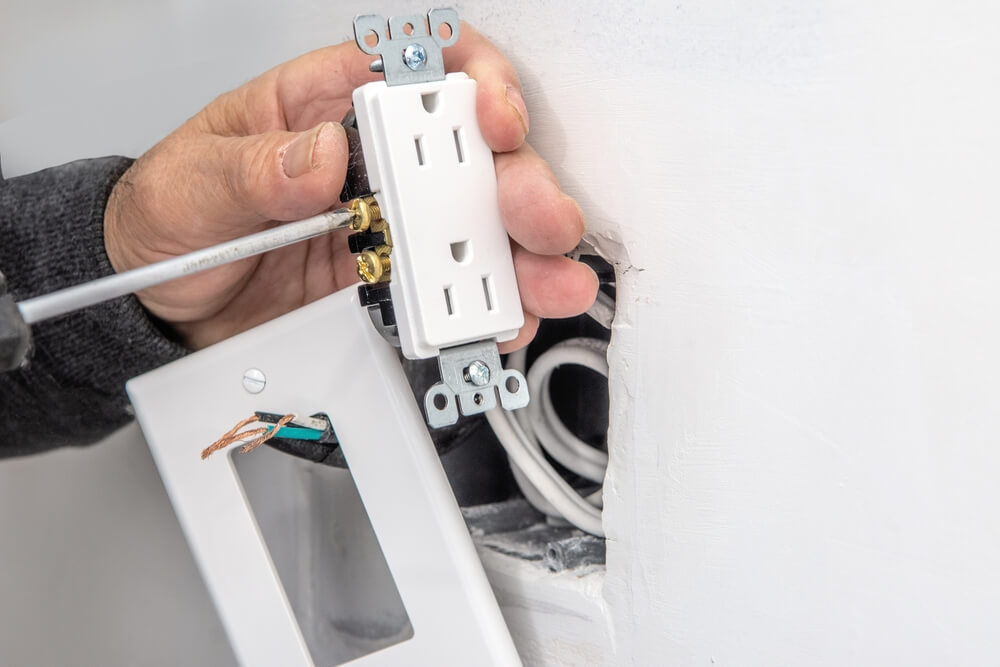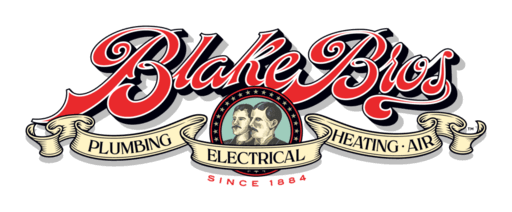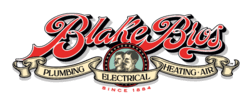Can I Add Outlets to My Home?

Many people agree that a home with few outlets can be frustrating. Appliances, lighting fixtures, electronics, chargers, and much more require to be plugged into an outlet for power, but what happens when there’s not one in reach? Power strips and extension cords are options, but they can be an eyesore and potential hazard, especially when there are multiple in use.
Adding outlets to a room is an option, so you’re never stuck with the same amount of outlets that the home was built with. However, electrical work can be complex and dangerous to perform on your own. The next question that people find themselves asking is, do you need an electrician to install outlets?
The short answer is no, you don’t need one. However, if you’re not familiar with electrical work or you don’t have the necessary tools, it’s best to contact an electrician who has experience installing electrical outlets and can determine the correct type needed that will still fit your budget.
7 Types of Electrical Outlets
When adding outlets to your home, there are a number of options you can consider based on the location of the outlet and how you plan to use it.
1. Standard 120V
A 120-volt outlet is the most common type of outlet you’ll find in standard American homes. It’s used for most small household appliances, lighting fixtures, electronics, and smartphone chargers.
2. 220V, 240V, and 250V
These outlets are typically used for powering larger equipment that require higher voltage levels. Some common appliances include washers and dryers, central AC units, electric water heaters, and heavier workshop machinery.
3. 2-Prong vs. 3-Prong
Have you ever noticed that some homes only have 2-prong outlets installed? Most homes built before the 1970s will contain 2-prong outlets rather than 3-prong, which is what’s required for your building to be up to code these days. The 3-prong outlet contains a ground wire, meaning it protects against electrical faults like short circuits or surges.
If you’re looking to upgrade your electrical outlets from a 2-prong to a 3-prong, consult with a licensed electrician to ensure that the system is properly grounded and meets current safety standards and codes.
4. GFCI Outlets
GFCI outlets, or ground fault circuit interrupter outlets, are required in any place where water may be present, like kitchens or bathrooms. You’ll likely be able to differentiate between other outlets because a GFCI outlet will have a reset and test button on the faceplate.
Unlike the standard outlets, a GFCI outlet is designed to monitor current flow and will trip the circuit if it detects any variation in the flow, preventing surges and electrocution.
5. AFCI Outlets
AFCIs are designed to detect and respond to arc faults, which are unintended electrical discharges that can occur when electrical wiring is damaged or deteriorated. The primary purpose of AFCIs is to reduce the risk of electrical fires caused by arc faults.
6. Outdoor
Many homes come equipped with an electrical outlet installed outside for a convenient source of power for various outdoor activities. These outlets are mainly used for powering decorative outdoor lights, lawn equipment, and pool equipment (if applicable).
Having an outlet outdoors is also convenient for EV charging stations. Outdoor outlets are designed to withstand exposure to the elements. They often have weather-resistant covers to protect against rain, snow, and dust, ensuring safe operation in outdoor environments.
7. Smart Outlets
If you have a smart home system, updating your outlets to smart outlets is a great way to seamlessly control electronics and keep utility bills low. A smart outlet is an electrical outlet that is equipped with wireless communication technology, allowing users to control and monitor connected devices remotely through a smartphone or other smart devices.
Smart outlets are part of the broader category of smart home devices, contributing to home automation and connectivity.
How Much Does It Cost to Add an Outlet to Your Home?
The national average cost to install an electrical outlet is $280, with $40 being the minimum and $1,500 being the higher end. Of course, the price will vary depending on the type, location, and the state of the home’s current electrical wiring.
The outlet price itself is the cheapest part. It’s mainly the installation and any additional electrical work needing updating for the outlets that cost the most money. See below for a breakdown of electrical outlet installation costs by type:
- Standard 120V: The outlet unit price alone can be anywhere from $1 to $7, with installation ranging from $150 to $300.
- 220V, 240V, 250V: The outlet unit price for these higher voltage outlets ranges from $8 to $30, with installation being anywhere from $250 to $800.
- GFCI and AFCI: GFCI and AFCI outlets typically fall anywhere between $12 to $40 with a $150 to $350 installation fee.
- Outdoor: An outdoor outlet typically ranges from $15 to $30, and installation is $180 to $350.
- Smart: A smart outlet will typically cost $20 to $50, with installation ranging from $175 to $350.
Before every electrical outlet installation, Blake Brothers’ electrical team will discuss your electrical needs and requirements with you so we can help you pick the correct type of outlet for every space in your home. With decades of industry experience, you can be confident in our ability to safely install electrical outlets and ensure everything is up to code.
If you are worried about arcs and surges, consider installing a whole-home surge protector. Surge protectors can protect your electric system, appliances, and electronics from shock and damage. Contact us today to schedule a service.

